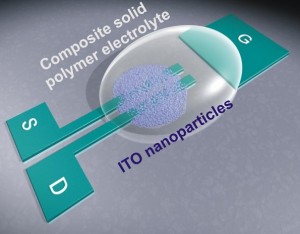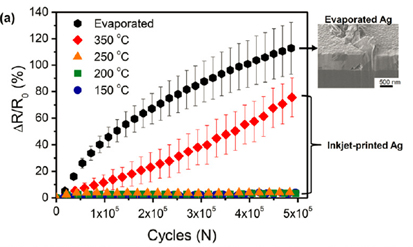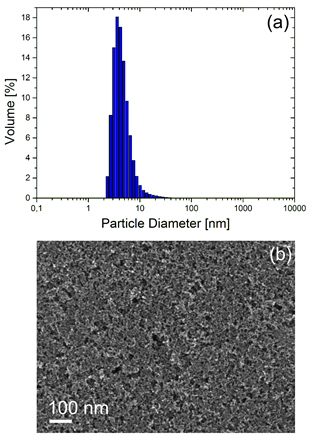Research Highlights

Printed and Electrochemically Gated, High-Mobility, Inorganic Oxide Nanoparticle FETs and Their Suitability for High-Frequency Applications
Scientists at KIT (Karlsruhe Institute of Technology) have shown that high-mobility field-effect transistors (FETs) can be fabricated from printed inorganic oxide nanoparticle-based FETs when combined with (printable) composite solid polymer electrolytes (CSPE) as the gate insulator.
NEWS: Materials Views
PUBLICATION: Advanced Functional Materials 20 JUL 2012

and an evaporated Ag film during a bending fatigue test.
The bending strain was 1.1%. Errors imply the standard
deviation for at least three samples.
Extended fatigue lifetimes of inkjet-printed Ag films by optimizing the nanoporous microstructure
In the case of vacuum-deposited metallic electrodes, adequate conductivity is provided, but it degrades gradually during cyclic mechanical deformation. Here, we demonstrate longterm-reliable Ag electrodes by inkjet printing. The electrical conductivity and the mechanical reliability during cyclic bending are investigated with respect to the nanoporous microstructure caused by post heat treatment, and are compared to those of evaporated Ag films of the same thickness. It is shown that there is an optimized nanoporous microstructure for inkjet-printed Ag films, which provides a high conductivity and improved reliability. It is argued that the nanoporous microstructure ensures connectivity within the particle network and at the same time reduces plastic deformation and the formation of fatigue damage. This concept provides a new guideline to develop an efficient method for highly conductive and reliable metallic electrodes for flexible electronics.
PUBLICATION: Nanotechnology Feb 2014

New inks with excellent printing properties and long term stability
The challenge for the Winterer Group of the University of Duisburg-Essen (UDE) is to master the complexity involved in ink-jet printing of colloidal dispersions containing small semiconductor nanoparticles. For example, inks composed of nanoparticle dispersion will only be printable when the particle agglomerate size in dispersions is below a certain threshold and process parameters such as surface tension and viscosity are within a well-defined window. Therefore semiconducting nanoparticles are prepared by chemical vapor synthesis (CVS) with very narrow size distribution and high crystallinity. A new ink based on ethylene glycol was created which shows excellent printing properties, long term stability and easy adjustable viscosity and surface tension. Figure 1 shows a particle size distribution of a prepared TiO2-ink and a SEM-image of a homogenous and compact printed structure of semiconducting TiO2-nanoparticles, which are used in the Virtual Institute.
